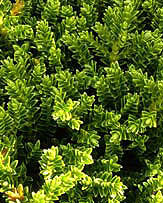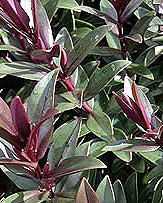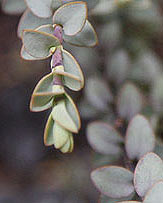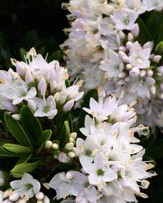Magnolia Grandiflora
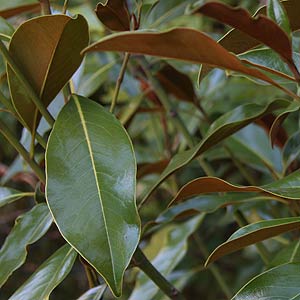 The evergreen magnolias we see in the UK are mostly Magnolia Grandiflora, almost all are cultivars and there are actually a number of varieties. And these are not the only evergreen species with M. delavayi from China being another.
The evergreen magnolias we see in the UK are mostly Magnolia Grandiflora, almost all are cultivars and there are actually a number of varieties. And these are not the only evergreen species with M. delavayi from China being another.
Magnolia Grandiflora trees are also known as the 'Southern Magnolia' and 'Bull Bay' and they do grow to be very large trees, reaching up to 30m in their natural environment.
However it is the cultivars that we mainly deal with in the UK, and many of these are smaller growing than the species.
With wonderful fragrant flowers and glossy green foliage backed with a coppery down Magnolia Grandiflora have been grown in the UK since the 1700s. In the UK it is Exmouth that is the oldest name cutivar, however many of the new smaller growing types are the popular ones with landscapers.
The beauty of these trees is that they will stand low temperatures however heavy frosts can knock them about. In our warmer areas they grow well, in colder climates a little shelter is appreciated.
Magnolia Grandiflora Care
A humus rich well drained soil is best fo Magnolia Grandiflora, and in the UK a position in full sun is preferred. The smaller cultivars take well to growing in containers or pots, and indeed we have seen Exmouth grown in a container, however with larger growing types this is not really a long term option.
Like all magnolias M. Grandiflora are fairly shallow rooted in that they have a mat of surface roots. As with any such plant avoid root disturbance and mulch well to retain moisture and remove the competition of weeds.
Magnolia Grandiflora Varieties
Exmouth will easily get to 15m over time, the long flowering 'Goliath' which will get to at least 15m + in height, the hardy 'Galissonni?Ūre' or Gallisoniensis which will also reach 15m+ but are also sold as standards, and 'Blanchard' which can get to over 20m.
The smaller growing evergreen cultivars include the popular Magnolia grandiflora 'Little Gem'. This is where the height estimation becomes interesting. They will reach 5-7m in time, they are slow growers. In some conditions they will get taller up to 15m, in the UK usually much less. However they are easily pruned to keep smaller, they make a great hedging plant and are nice and dense growing in form.
Pruning Magnolia Grandiflora
A lot of debate about this and it really does depend on the variety you are growing the condition of the tree and size. For example the larger growing cultivars do not really need much pruning, and once they are established tend to resent it a little. However yo u can remove dead and diseased wood and you can lightly prune to shape.
The problem with large pruning (removal of larger limbs, or 'hard pruning') is that magnolias tend to susceptible to pruning wounds not healing well, so rot may set in. You could use a treatment to seal the wounds, although we have not had experience with this.
The best time to prune is in spring, when new growth in beginning. Magnolias also flower on the previous years growth, so if you are after flowers then be a little careful.
The smaller cultivars such as 'Little Gem' are a more densely growing plant and can be pruned every year to form a hedge if required. Prune regularly form a young age. It is best not to hard prune Magnolia Grandiflora back to bare wood if possible.
Magnolia Grandiflora Problems
Not flowering
Magnolia Grandiflora can take a while to flower, sometimes up to 10 years. The smaller growing 'Little Gem' and other are much quicker. You may also find that if over fertilized they will put on lots of leaf growth and no flowers.
Root Disturbance
These plants do not like to have their roots disturbed, transplanting, digging around them and other practices may cause them to 'sulk' a little.
You may also like
- Magnolia plants for sale
- M. Black Tulip
- M. lilliflora
- M stellata
- M grandiflora
- M denudata
- M. soulangeana
- M.wilsonii. Magnolia wilsonii is an interesting form, it has drooping or pendulous flowers that hang down, a multi stemmed deciduous shrub well worth a place in the garden.
- M. Little Gem
- M. Kay Parris
- M. Teddy Bear
